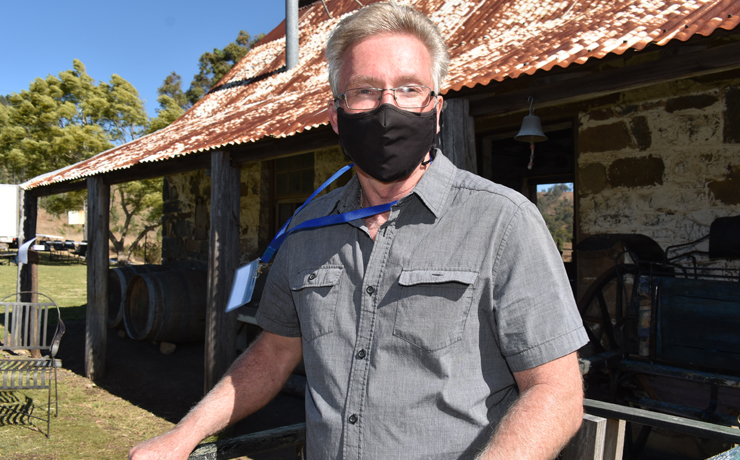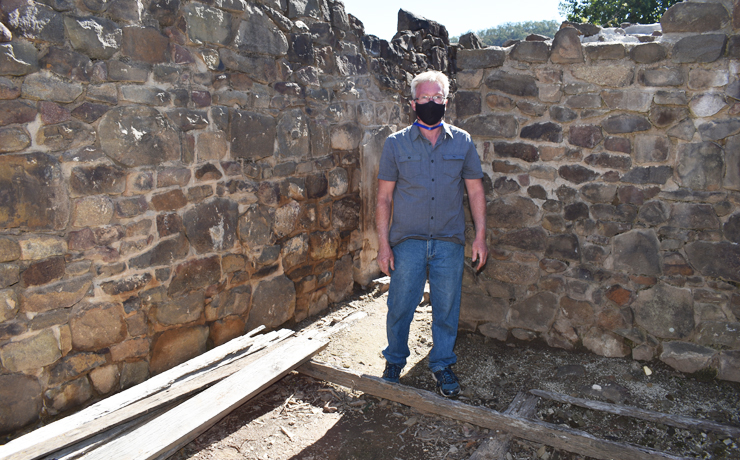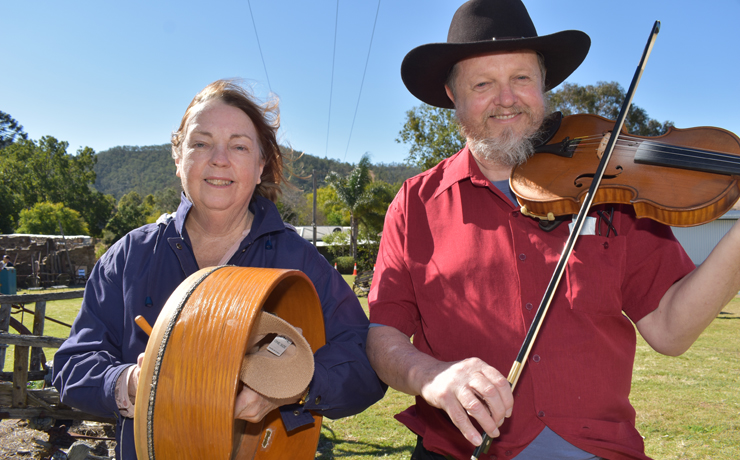
July 28, 2021
More than 500 people took advantage of the two open days at the Moore Stonehouse at the weekend to enjoy a glimpse of what life was like in late 19th century Queensland.
The Stonehouse complex, adjacent to the D’Aguilar Highway just outside Moore, is owned by Loretta and John Eastwood who bought the historic property in 2018 and have been working to restore the buildings ever since.
The Stonehouse area consists of three buildings, generally believed to have served as an inn, a storehouse and a kitchen.
It was a coachstop during the 1880s, where the horses would be changed and travellers take a break, before the haul up the Blackbutt Range.
As the property is privately owned, it’s not generally open to the public or photographers, but the Eastwoods recognise there is intense interest in the buildings from the local community.
This is the second time the couple has joined with the not-for-profit Brisbane Valley Heritage Trails group and Friends Of Stonehouse to put on an open day.
Visitors, some of whom dressed in period costume (albeit with face masks!), enjoyed live music as they strolled among the historic buildings on Saturday and Sunday.
Musicians included Tony Foran, the Sempf Family and the recently formed Nanango Choir.
A shuttle bus, provided by Out There Cycling, ran regular trips from Moore to the complex as parking at the site was very limited.
A small army of volunteers guided the guests around the buildings and answered questions.
But the visitors also shared their own memories of the Stonehouse and some brought along photographs which will be copied and added to the Brisbane Valley Heritage Trails’ historic collection.
Among the guests who dropped in over the weekend were South Burnett Mayor Brett Otto, Somerset councillors, local Federal MP Shayne Neumann and descendants of the original Williams family which erected the buildings.
Kerry Wyvill, from Yarraman, loaned items from his museum to add to the historic displays.
* * *
Moore Stonehouse was built in the 1870s by stonemasons Robert and Charles Williams.
It was originally built as a homestead before being converted a few years later into an inn and stagecoach stop.
The stones are believed to have been extracted from the nearby hill and antbed and lime were used as mortar.
Local timber was used for the window and door frames, roof frame, floorboards and shingles.
The building originally consisted of five rooms but was later extended.
The two adjoining rooms on the eastern side are believed to have been the original inn area.
There was also a mailroom, dining room and formal lounge.
A covered walkway at the rear ran from the back door to the kitchen and pantry.
A second floor, reached via internal stairs, consisted of a hallway and two large sleeping areas.
A description of the three buildings, published in the Queensland Times in 1949, reported they were in good order although some of the walls had cracked “probably due to earth tremors”.
However, over subsequent years the inn building fell into disrepair with stones collapsing in piles and the roof disappearing.
Trees also sprung up inside the walls.
The Eastwoods have called in professional stonemasons to re-erect and stabilise walls, trying to preserve as much of the fabric of the original building as possible.
However, John admitted it would be a long process …
Related articles:





























